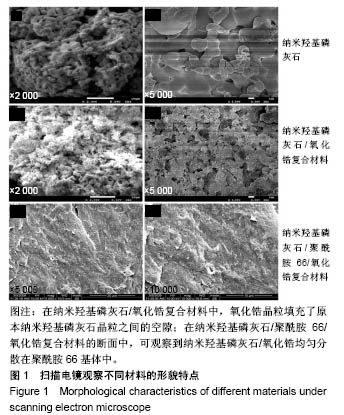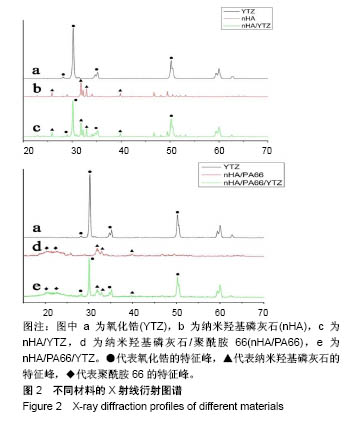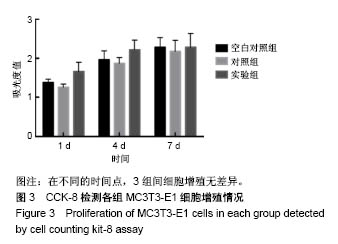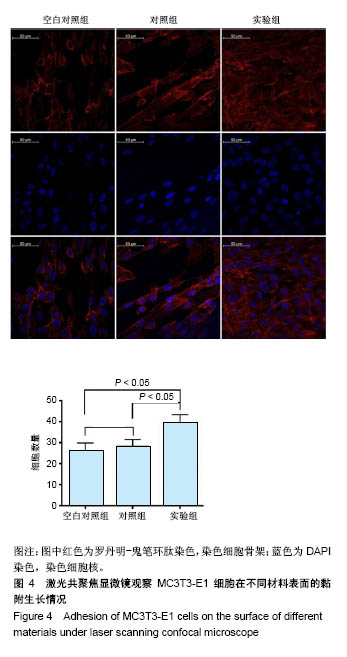| [1] Zhang Y, Quan Z, Zhao Z, et al. Evaluation of anterior cervical reconstruction with titanium mesh cages versus nano-hydroxyapatite/polyamide66 cages after 1- or 2-level corpectomy for multilevel cervical spondylotic myelopathy: a retrospective study of 117 patients. PLoS One. 2014;9(5):e96265. [2] Shokrollahi P, Mirzadeh H, Scherman OA, et al. Biological and mechanical properties of novel composites based on supramolecular polycaprolactone and functionalized hydroxyapatite. J Biomed Mater Res A. 2010;95(1):209-221. [3] Zhang X, Zhang Y, Zhang X, et al. Mechanical properties and cytocompatibility of carbon fibre reinforced nano-hydroxyapatite/polyamide66 ternary biocomposite. J Mech Behav Biomed Mater. 2015;42:267-273. [4] Li J, Man Y, Zuo Y, et al. In Vitro and In Vivo Evaluation of a nHA/PA66 Composite Membrane for Guided Bone Regeneration. J Biomater Sci Polym Ed. 2011;22(1-3):263-275. [5] Xiong Y, Ren C, Zhang B, et al. Analyzing the behavior of a porous nano-hydroxyapatite/polyamide 66 (n-HA/PA66) composite for healing of bone defects. Int J Nanomedicine. 2014;9:485-494. [6] Zhang Y, Deng X, Jiang D, et al. Long-term results of anterior cervical corpectomy and fusion with nano-hydroxyapatite/polyamide 66 strut for cervical spondylotic myelopathy. Sci Rep. 2016;6:26751. [7] Yang P, Bian C, Huang X, et al. Core decompression in combination with nano-hydroxyapatite/polyamide 66 rod for the treatment of osteonecrosis of the femoral head. Arch Orthop Trauma Surg. 2014;134(1):103-112. [8] Yang X, Song Y, Liu L, et al. Anterior reconstruction with nano-hydroxyapatite/polyamide-66 cage after thoracic and lumbar corpectomy. Orthopedics. 2012;35(1):e66-73. [9] Zhao Z, Jiang D, Ou Y, et al. A hollow cylindrical nano-hydroxyapatite/polyamide composite strut for cervical reconstruction after cervical corpectomy. J Clin Neurosci. 2012; 19(4):536-540. [10] Im SM, Huh YH, Cho LR, et al. Comparison of the fracture resistances of glass fiber mesh- and metal mesh-reinforced maxillary complete denture under dynamic fatigue loading. J Adv Prosthodont. 2017;9(1):22-30. [11] Lewicki JP, Rodriguez JN, Zhu C, et al. 3D-Printing of Meso-structurally Ordered Carbon Fiber/Polymer Composites with Unprecedented Orthotropic Physical Properties. Sci Rep. 2017;7: 43401. [12] Manicone PF, Rossi Iommetti P, Raffaelli L. An overview of zirconia ceramics: basic properties and clinical applications. J Dent. 2007;35(11):819-826. [13] Bergschmidt P, Bader R, Mittelmeier W. Metal hypersensitivity in total knee arthroplasty: revision surgery using a ceramic femoral component—a case report. Knee. 2012;19(2):144-147. [14] Bergschmidt P, Bader R, Ganzer D, et al. Ceramic femoral components in total knee arthroplasty—two years follow-up results of an international prospective multicentre study. Open Orthop J. 2012;6:172-178. [15] Sumitomo N, Noritake K, Hattori T, et al. Experiment study on fracture fixation with low rigidity titanium alloy: plate fixation of tibia fracture model in rabbit. J Mater Sci Mater Med. 2008;19(4): 1581-1586. [16] Morwood MP, Garrigues GE. Shoulder arthroplasty in the patient with metal hypersensitivity. J Shoulder Elbow Surg. 2015;24(7): 1156-1164. [17] Yao MZ, Huang-Fu MY, Liu HN, et al. Fabrication and characterization of drug-loaded nano-hydroxyapatite/polyamide 66 scaffolds modified with carbon nanotubes and silk fibroin. Int J Nanomedicine. 2016;11:6181-6194. [18] Liao J, Zhang Y, Guan X, et al. Synthesis and characterization of nano-hydroxyapatite/polyamide 66 biocomposites reinforced with multi-walled carbon nanotubes. J Biomater Sci Polym Ed. 2016; 27(16):1674-1684. [19] You F, Li Y, Zuo Y, et al. The influence of γ-ray irradiation on the mechanical and thermal behaviors of nHA/PA66 composite scaffolds. ScientificWorldJournal. 2013;2013:162384. [20] Asgharzadeh Shirazi H, Ayatollahi MR, Asnafi A, et al. To reduce the maximum stress and the stress shielding effect around a dental implant-bone interface using radial functionally graded biomaterials. Comput Methods Biomech Biomed Engin. 2017; 13:1-10. [21] Gyorgyey A, Ungvari K, Kecskemeti G, et al. Attachment and proliferation of human osteoblast-like cells (MG-63) on laser-ablated titanium implant material. Mater Sci Eng C Mater Biol Appl. 2013;33(7):4251-4259. [22] Ma R, Tang S, Tan H, et al. Preparation, characterization, and in vitro osteoblast functions of a nano-hydroxyapatite/ polyetheretherketone biocomposite as orthopedic implant material. Int J Nanomedicine. 2014;9:3949-3961. [23] Meyer U, Buchter A, Wiesmann HP, et al. Basic reactions of osteoblasts on structured material surfaces. Eur Cell Mater. 2005;9:39-49. [24] Kilian KA, Bugarija B, Lahn BT, et al. Geometric cues for directing the differentiation of mesenchymal stem cells. Proc Natl Acad Sci USA. 2010;107(11):4872-4877. [25] Walker J, Shadanbaz S, Woodfield TB, et al. Magnesium biomaterials for orthopedic application: a review from a biological perspective. J Biomed Mater Res B Appl Biomater. 2014;102(6): 1316-1331. [26] Ding Y, Tian R, Yang Z, et al. Effects of serum albumin on the degradation and cytotoxicity of single-walled carbon nanotubes. Biophys Chem. 2017;222:1-6. [27] Bojar W, Ciach T, Kucharska M, et al. Cytotoxicity Evaluation and Crystallochemical Analysis of a Novel and Commercially Available Bone Substitute Material. Adv Clin Exp Med. 2015;24(3):511-516. [28] Li H, Gong M, Yang A, et al. Degradable biocomposite of nano calcium-deficient hydroxyapatite-multi(amino acid) copolymer. Int J Nanomedicine. 2012;7:1287-1295. [29] Liu X, Shen H, Song S, et al. Accelerated biomineralization of graphene oxide-incorporated cellulose acetate nanofibrous scaffolds for mesenchymal stem cell osteogenesis Colloids Surf B Biointerfaces. 2017;159:251-258. [30] Zhang X, Zhang Y, Zhang X, et al. Mechanical properties and cytocompatibility of carbon fibre reinforced nano-hydroxyapatite/polyamide66 ternary biocomposite. J Mech Behav Biomed Mater. 2015;42:267-273. [31] Anselme K. Biomaterials and interface with bone. Osteoporos Int. 2011;22(6):2037-2042. |
.jpg)





.jpg)